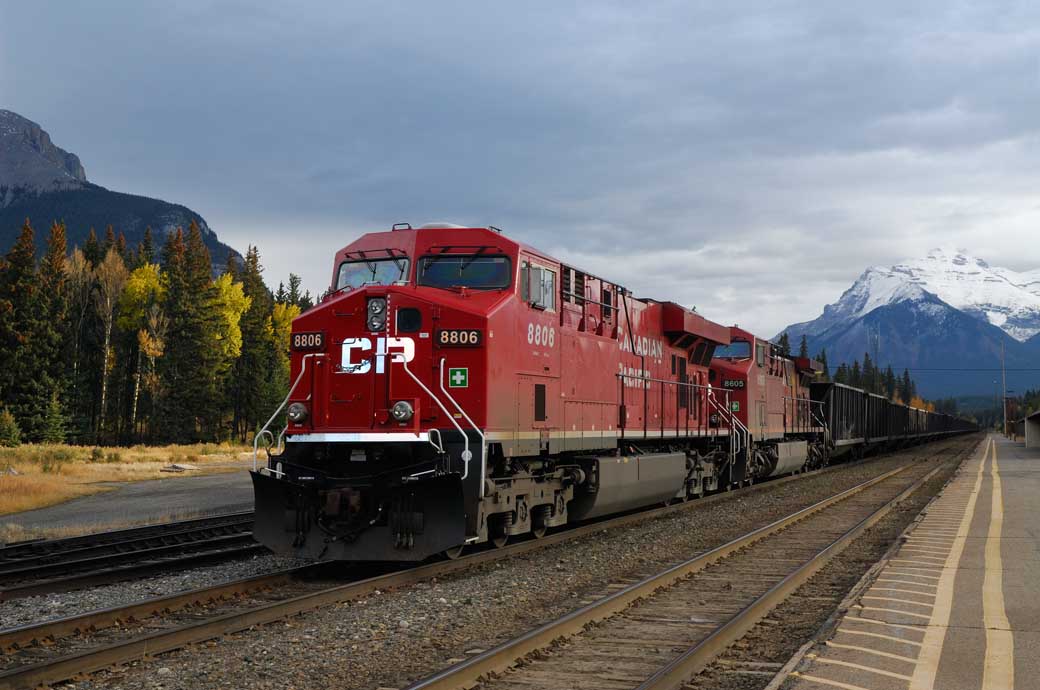
The closure of the Canadian railway lines led to a massive upheaval in trade between Canada, Mexico, and the US. The Canadian railway lines are crucial for these countries as they facilitate the transport of essential goods, from grains and food products to automobiles and their parts. Additionally, they play a significant role in connecting the US and Mexico to Canadian ports, which can further transport goods to regions such as the EU and Asia. The disruptions caused significant uncertainty, potentially resulting in millions of pounds in losses each day. Although railway services resumed this week, the failure to negotiate bilaterally and the resultant stoppage exposed the vulnerability of supply chains to such unpredictable disruptions. It also highlighted the importance of unions and government arbitration in logistics.
The importance of the railway network
Two major railway lines connect Canada to the United States and Mexico: the Canadian National Railway Line (CN) and the Canadian Pacific Kansas City Line (CPKC). These railways are significant economic drivers for the three nations, enabling major trade between them. The railway line, which connects three different countries — Canada, the United States, and Mexico — runs through the Gulf of Mexico, a major textile-producing region, and plays a crucial role in Canadian-US trade. It is one of the most cost-effective methods for transporting goods to the United States and Mexico.
Figure 1: Sector-wise freight share of Canadian railways
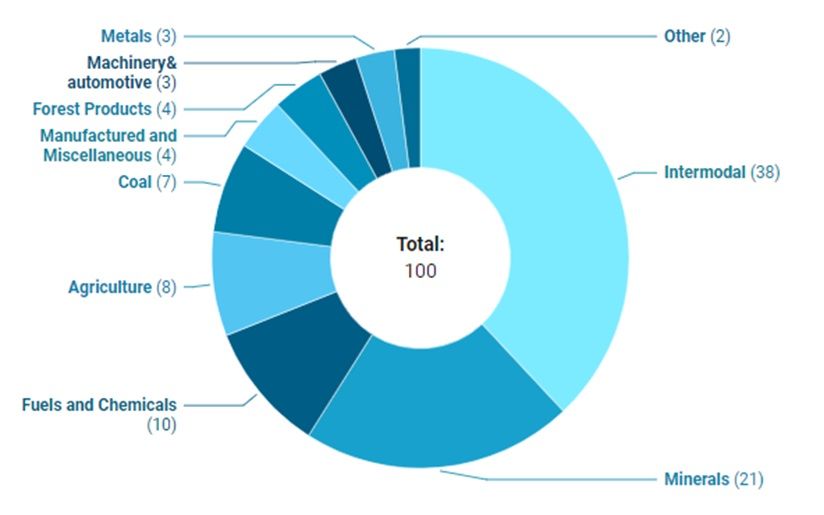
Source: Canadian National Railway Network
The significance of the railway line can be better understood by examining some important statistics. The Canadian National Railway extends to Houston in the US, whereas the CPKC expands to the Gulf of Mexico, making it one of the most extensive cross-border railway networks that can significantly contribute to the Canadian economy. Many US exporters, especially those in the Midwest regions, use this rail network to speed up the transportation of packages to their destinations in the EU and Asia.
In the US, the Canadian railway network intersects with other major railways, such as BNSF Railway, Union Pacific, Norfolk Southern, and CSX, facilitating the movement of merchandise worth billions across nations. Additionally, there are differences in where the railway networks connect. The Canadian National Railway's network reaches South Orleans in the US, while the CPKC network connects to US ports like Corpus Christi, New Orleans, and Gulfport, further linking the network to the ports of Tampico and Lázaro Cárdenas on the east and west coasts of Mexico.
Figure 2: Total trade between Mexico and Canada via railways (in $ bn)
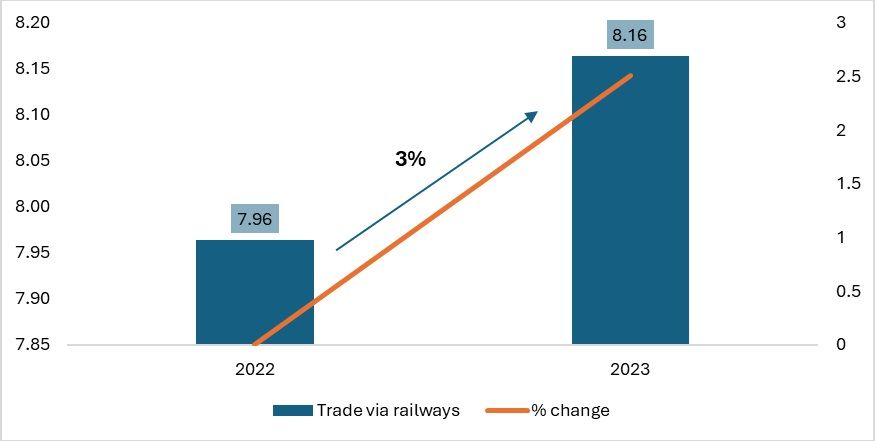
Source: UN Comtrade, F2F analysis
The railway network experiences high traffic and carries different types of cargo across Mexico and the US. Through this network, Mexico exports trucks, automobiles, automotive parts, tropical fruits, broadcasting equipment, and medical instruments to Canada. Mexico is Canada’s fourth-largest trading partner, while the US is the largest. The significance of the railway line is evident from the increased value of trade facilitated by the railways. According to aggregated data, total trade via railways from Canada to Mexico saw a 3 per cent year-on-year (YoY) increase, underscoring the importance of the railway line for the Canadian economy. The trade between Canada and Mexico was approximately $40 billion in 2023.
These rail services facilitate both passenger travel and the transportation of goods worth millions.
The effect on supply chains
The rail services halt stopped almost 2,500 services to the US, which transport chlorine, potash, cooking oil, and frozen food.
The disruption impacted the agricultural industry in both countries. For Canada, the US is the largest trading partner for coal, agricultural products, food products, and other intermodal goods. For the US and Mexico, the railway networks are a significant cost saver, as they play a crucial role in transporting goods to different corners of the world. For the US, the port in Montreal is helpful for transporting goods to Europe, while Vancouver is a convenient gateway for trade with Asia.
Therefore, intermodal and bulk transport are vital for railway operations. Intermodal transport accounts for about 24 per cent of revenue for CN Railways, while merchandise trade brings in the largest revenue for CPKC. In specific categories, food alone contributes about 20 per cent of revenue, highlighting the importance of the railway network's operations not only for Canada but also for the US.
An extension of the railway closure beyond two weeks could cause significant losses to perishable goods like agricultural products in both countries and lead to serious issues, such as food inflation in the US.
Figure 3: Revenue share of different categories of goods in CN (in %)
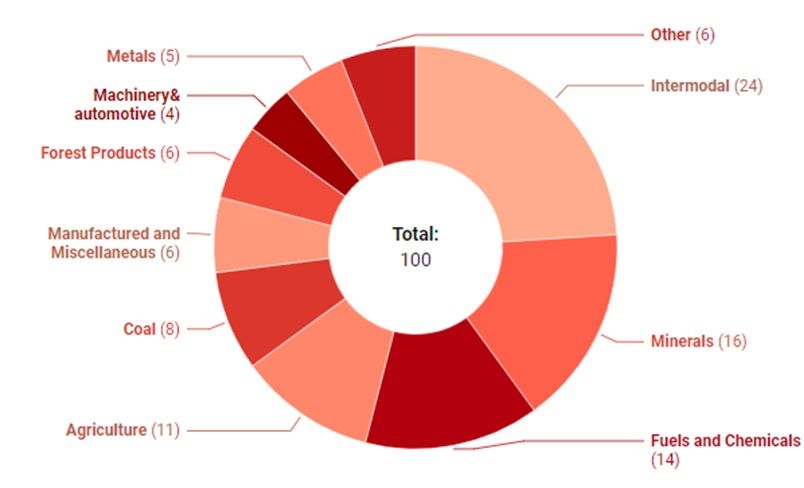
Source: CN Annual Report 2023
Figure 4: Revenue share of different categories of goods in CPKC (in %)
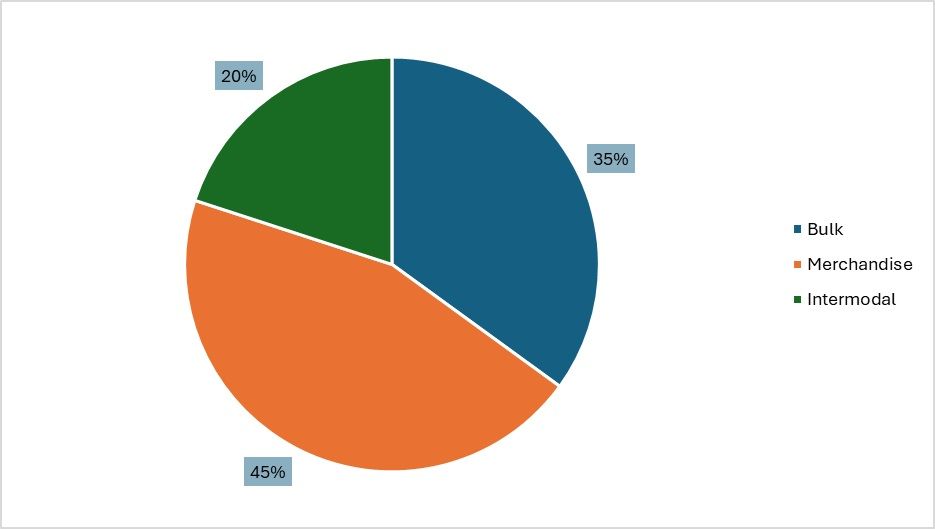
Source: CPKC Annual Report 2023
Potential losses
Although there are no clear estimates of the potential losses from the closure of the railway lines, Moody’s has provided an estimate of $341 million per day for Canada. The stoppage could have a ripple effect throughout the US, which may already be starting to show. The US Midwest region relies heavily on railway lines to transport goods such as coal and automobiles to Canada, and the current situation has forced companies to scramble for alternative routes. Compared to railways, road transport is significantly more expensive for suppliers. With the railway stoppage, increased demand drove up the cost of road transportation.
Even though these figures are only estimates, there is already a precedent. A workers’ protest in British Columbia once resulted in a loss of around $500 million when Canadian goods were not allowed to pass through the port.
Recent updates
Although the Canadian government directed CPKC to restart railway services, the Teamsters Canada Rail Conference (TCRC) initially refused to resume operations without a resolution. Despite this, services have been operating again since Monday. If the stoppage had continued, it could have increased the risk of a prolonged disruption in railway services, potentially causing extended losses for manufacturers and suppliers across North America. Logistics and their quality are crucial to the cost of goods and the timely supply of necessary goods and services. A disruption in services can significantly impact prices, increase alternative freight costs, cause losses in various sectors, and potentially lead to a decline in orders.
While the government has exercised its authority under Section 107 of the Canada Labour Code, the Canadian Industrial Relations Board has imposed final arbitration. However, the Teamsters Union has not agreed with the ruling, even though it has complied with government directives and resumed services. Therefore, services may continue for now, with the next steps to be determined after final negotiations. Nevertheless, the Teamsters may potentially challenge the decision in court.
Key takeaway
Labour strikes and the collapse of supply chains worldwide highlight two key issues: labour protests and the bargaining power of workers. Unequal bargaining power can lead to lockouts, shutting down services and disrupting essential operations within the economy. Labour laws and wages are critical factors affecting the stability of supply chains and the smooth functioning of logistics globally, and these challenges persist regardless of a country's development status.
Recent examples of labour protests include the Bangladesh textile workers' strike for higher wages and the US automotive workers' protests in 2023. Such protests can cause production halts and blockages in supply chains, illustrating the vulnerability of these systems to disruptions. To maintain smooth logistics and supply chain operations, effective negotiations and robust laws are necessary to ensure a fair and efficient resolution of labour disputes.
ALCHEMPro News Desk (KL)
Receive daily prices and market insights straight to your inbox. Subscribe to AlchemPro Weekly!